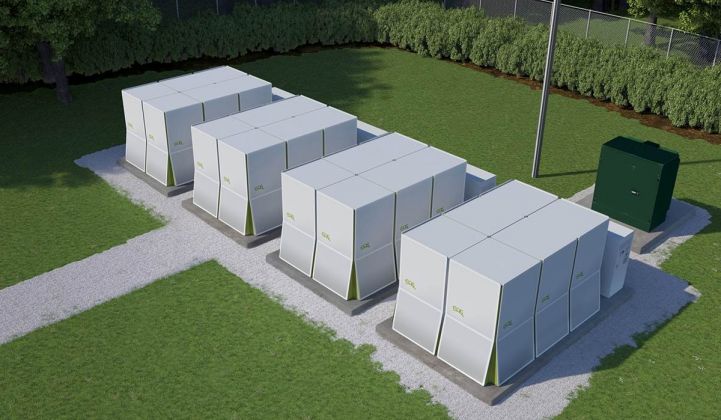Eos Energy Storage, the startup that’s attracted utility interest from around the world in its low-cost, zinc-based batteries, is raising money to build more of them, and to get those units out in the field. Deployments are needed to prove the company's bold claims of multi-hour, long-lasting energy storage at a cost of $160 per kilowatt-hour.
On Tuesday, Eos announced the initial closing of a sale in a private placement of approximately $23 million. The New York-based startup previously raised $23 million in May 2015 in a round led by AltEnergy, and about $27 million in two previous funding rounds from investors including OCI, NRG Energy and Fisher Brothers.
The money will fund the scale-up of contract manufacturing and commercial deployment of its Eos Aurora batteries. These 1-megawatt, 4-megawatt-hour units use zinc, a much cheaper metal than lithium, but one that’s proven to be a challenge for rechargeable batteries.
Eos says it’s solved these problems through a proprietary coating that reduces corrosion over multiple charge-discharge cycles, as well as other materials and design improvements, to yield a battery with 75 percent round-trip efficiency and a 10,000-cycle, or 30-year, lifetime.
As for price, the company has long been targeting $160 per kilowatt-hour, which is about half the cost of the cheapest lithium-ion batteries on the market -- although lithium-ion’s massive manufacturing base is sure to drive down those prices in the years to come.
Eos’ batteries sacrifice round-trip efficiency in comparison to lithium-ion, which is in the 90 percent range. But they have a better profile for multi-hour discharge cycles, particularly in the 4- to 6-hour range, where lithium-ion batteries really struggle.
That puts them in a class of long-duration batteries, including other water-based electrolyte designs like those from Aquion Energy, as well as flow batteries from companies like UniEnergy, Primus Power, ViZn Energy, Redflow and the now-defunct Imergy.
Eos has built partnerships with a broad range of utilities, including hometown utility Consolidated Edison, which was the first to put the company’s 100-kilowatt units into field trials. GDF Suez is also testing its units, and Pacific Gas & Electric has a $2.2 million state grant to install them in a pilot project with behind-the-meter battery startup Stem.
PG&E is also Eos’ first megawatt-scale customer, through a 10-megawatt contract with developer Convergent Energy + Power awarded as part of the utility’s 75-megawatt procurement back in December. These projects are set to be built and running by the end of the decade, under the state’s 1.3 gigawatts-by-2020 energy storage mandate.
Eos used upstate New York contract manufacturer Incodema to build its initial test units, but it has turned to larger partners to meet the scale of orders like those it’s getting from PG&E. Like the other startups competing against lithium-ion batteries, Eos faces the challenge of going up against an established manufacturing base with clear paths to cost reductions. That will make its first megawatt-scale deployments a critical test of its ability to deliver on its potentially game-changing promises.



